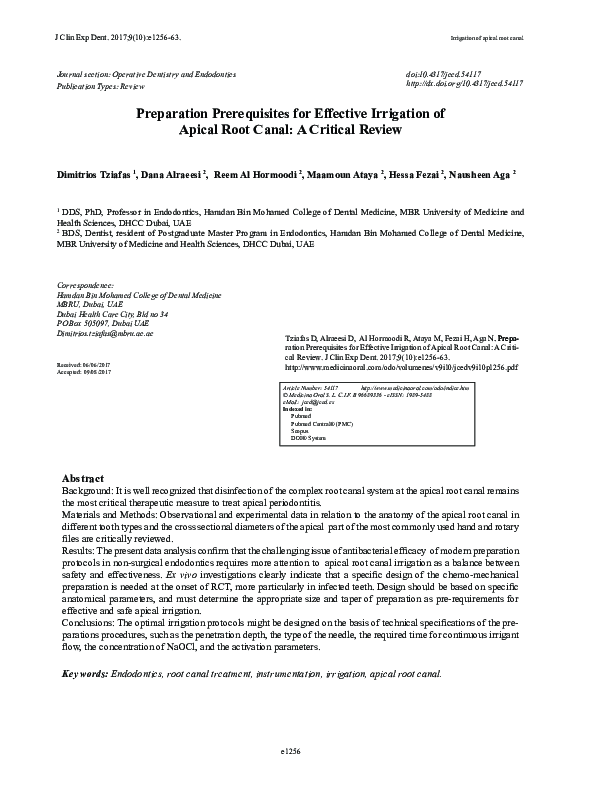Apical Periodontitis: Effective Root Canal Solutions

The realm of endodontics is complex and multifaceted, with various conditions affecting the pulp and surrounding tissues of the teeth. One such condition is apical periodontitis, an inflammatory response that occurs in the periapical tissues surrounding the root of a tooth. This condition is often a precursor to more severe complications, such as abscesses or cysts, if left untreated. The primary cause of apical periodontitis is bacterial invasion of the pulp, which can be due to deep caries, cracks, or trauma. Understanding the pathogenesis, symptoms, and treatment options for apical periodontitis is crucial for effective management and prevention of long-term damage to the tooth and surrounding structures.
Pathogenesis of Apical Periodontitis
Apical periodontitis involves an immune response to bacterial invasion, leading to inflammation of the periapical tissues. This response can be acute or chronic, depending on the duration and extent of the infection. The condition can manifest as symptomatic or asymptomatic, with the former often presenting with pain upon palpation or percussion of the affected tooth. The bacteria most commonly implicated in apical periodontitis are those that compose the normal oral flora, such as Streptococci, Enterococci, and Anaerobes. These microorganisms can penetrate the pulp through various means, including dental caries, periodontal pockets, or direct trauma to the tooth.
Symptoms of Apical Periodontitis
The clinical presentation of apical periodontitis can vary significantly among individuals. Some patients may be asymptomatic, discovered only through radiographic examination, while others may present with severe pain and swelling. Common symptoms include:
- Pain: Often the most significant complaint, pain can range from mild to severe and may be exacerbated by chewing, biting, or thermal changes.
- Sensitivity: Increased sensitivity to temperature changes can be an early sign of apical periodontitis, although this symptom can also be associated with other conditions.
- Swelling and Redness: In more severe cases, inflammation can lead to visible swelling and redness of the surrounding soft tissues.
- Mobility: In cases where the inflammation has affected the periodontal ligament, the tooth may exhibit increased mobility.
Diagnosis of Apical Periodontitis
Diagnosing apical periodontitis involves a combination of clinical evaluation, radiographic examination, and sometimes, additional tests to confirm the presence of pulp vitality or necrosis. Key diagnostic tools include:
- Radiographic Examination: Periapical radiographs can show changes in the periapical bone, such as widening of the periodontal ligament space or the formation of a periapical radiolucency, indicative of apical periodontitis.
- Pulp Vitality Tests: These tests assess the health of the pulp and can include thermal tests, electrical tests, or laser Doppler flowmetry.
- Clinical Examination: Includes assessment of pain to percussion, palpation, and mobility, as well as evaluating for signs of swelling or sinus tracts.
Treatment Options for Apical Periodontitis
The primary goal of treating apical periodontitis is to eliminate the infection source, reduce inflammation, and prevent further complications. Treatment modalities can range from non-surgical root canal therapy to surgical interventions.
Non-Surgical Root Canal Therapy
Non-surgical root canal therapy is the first line of treatment for apical periodontitis. The procedure involves:
- Access and Exploration: Opening the tooth to access the pulp chamber and root canals.
- Cleaning and Shaping: Removing infected pulp tissue and debris from the canal, followed by shaping the canal to receive a filling material.
- Obturation: Filling the cleaned and shaped canal with a material, such as gutta-percha, to prevent re-infection.
- Restoration: Placing a final restoration, such as a crown, to protect the tooth from fracture.
Surgical Interventions
In cases where non-surgical therapy is not possible or has failed, surgical interventions may be necessary. These include:
- Apicoectomy: Surgical removal of the infected periapical tissue and the tip of the root, followed by filling the root end with a biocompatible material.
- Periapical Surgery: Involves surgical access to the periapical region to remove infected tissue and repair the area.
Prevention and Prognosis
Prevention of apical periodontitis primarily involves maintaining good oral hygiene, regular dental check-ups, and timely treatment of dental decay or other conditions that could lead to pulp infection. The prognosis for teeth treated for apical periodontitis is generally good, especially if the condition is caught early and treated appropriately. However, the success of the treatment depends on various factors, including the extent of the infection, the timing of the intervention, and the quality of the treatment performed.
Conclusion
Apical periodontitis is a common condition that requires prompt and effective treatment to prevent long-term damage to the tooth and surrounding structures. Understanding the causes, symptoms, and treatment options is crucial for both dentists and patients. By combining thorough diagnosis with appropriate treatment modalities, it is possible to manage apical periodontitis successfully, preserving the natural dentition and ensuring the patient’s comfort and oral health.
What are the primary symptoms of apical periodontitis?
+The primary symptoms include pain, sensitivity, swelling, and redness. However, some cases may be asymptomatic.
How is apical periodontitis diagnosed?
+Diagnosis involves a combination of clinical evaluation, radiographic examination, and sometimes additional tests to confirm pulp vitality or necrosis.
What are the treatment options for apical periodontitis?
+Treatment options include non-surgical root canal therapy and, in some cases, surgical interventions like apicoectomy or periapical surgery.
Can apical periodontitis be prevented?
+Prevention primarily involves maintaining good oral hygiene and seeking timely dental care for conditions that could lead to pulp infection, such as dental decay or trauma.
What is the prognosis for teeth treated for apical periodontitis?
+The prognosis is generally good if the condition is caught early and treated appropriately. However, success depends on factors like the extent of the infection and the quality of treatment.
